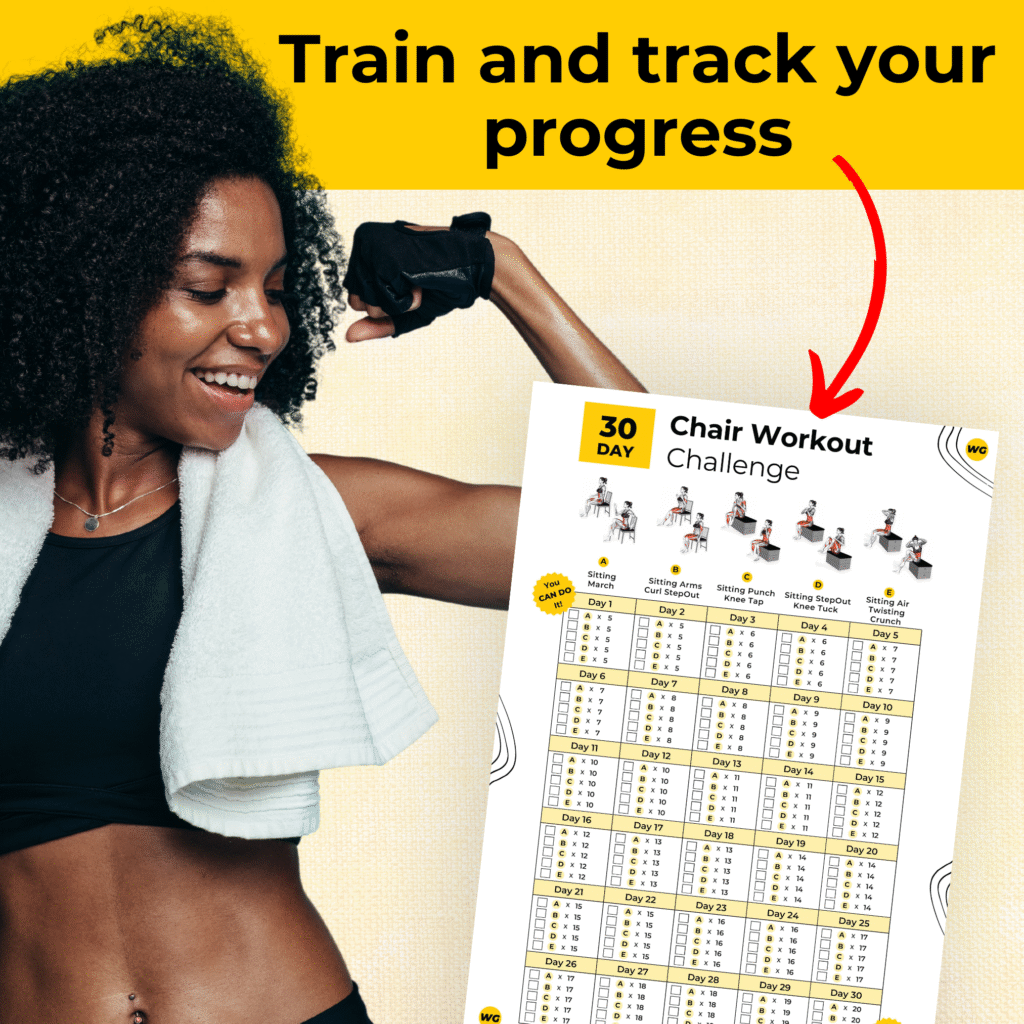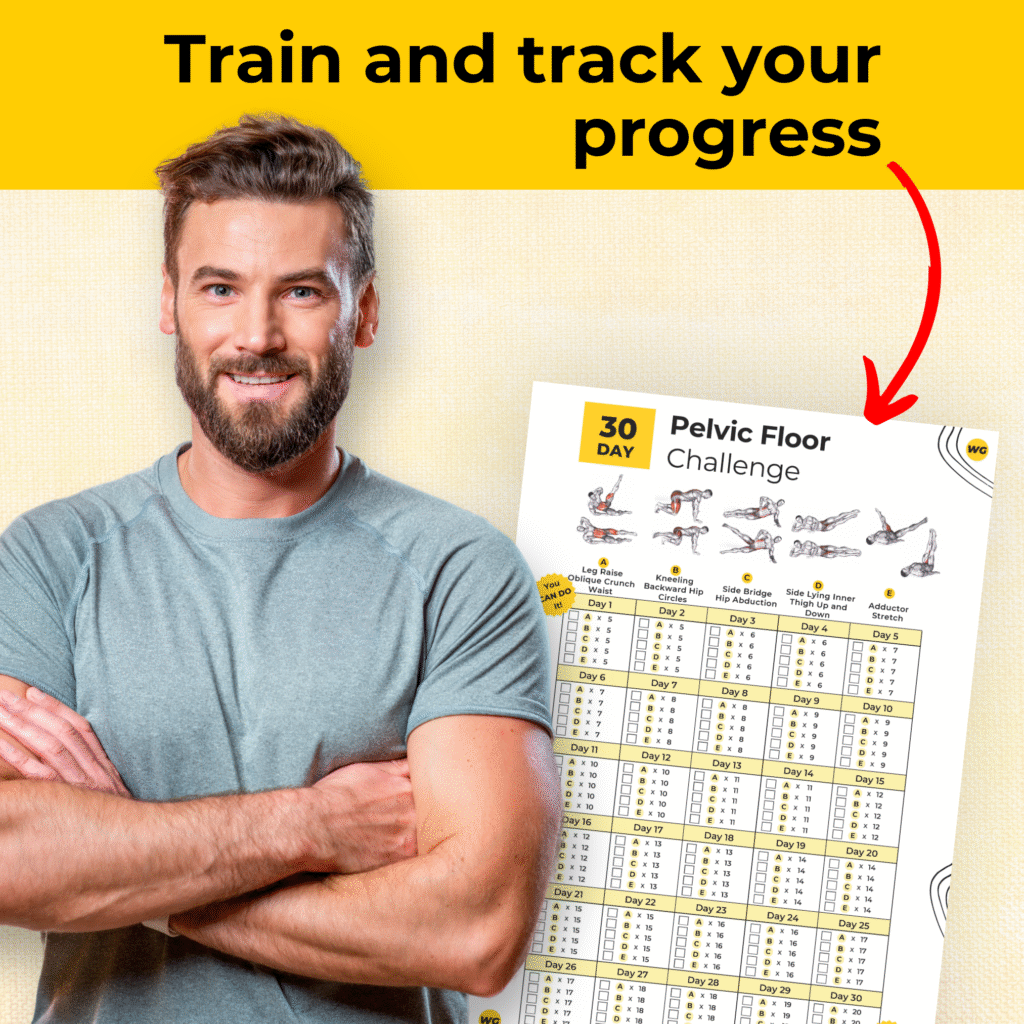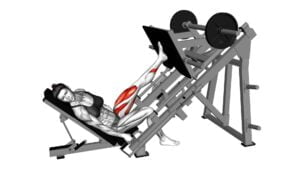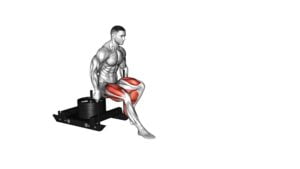Sled Backward Angled Calf Raise – Video Exercise Guide & Tips
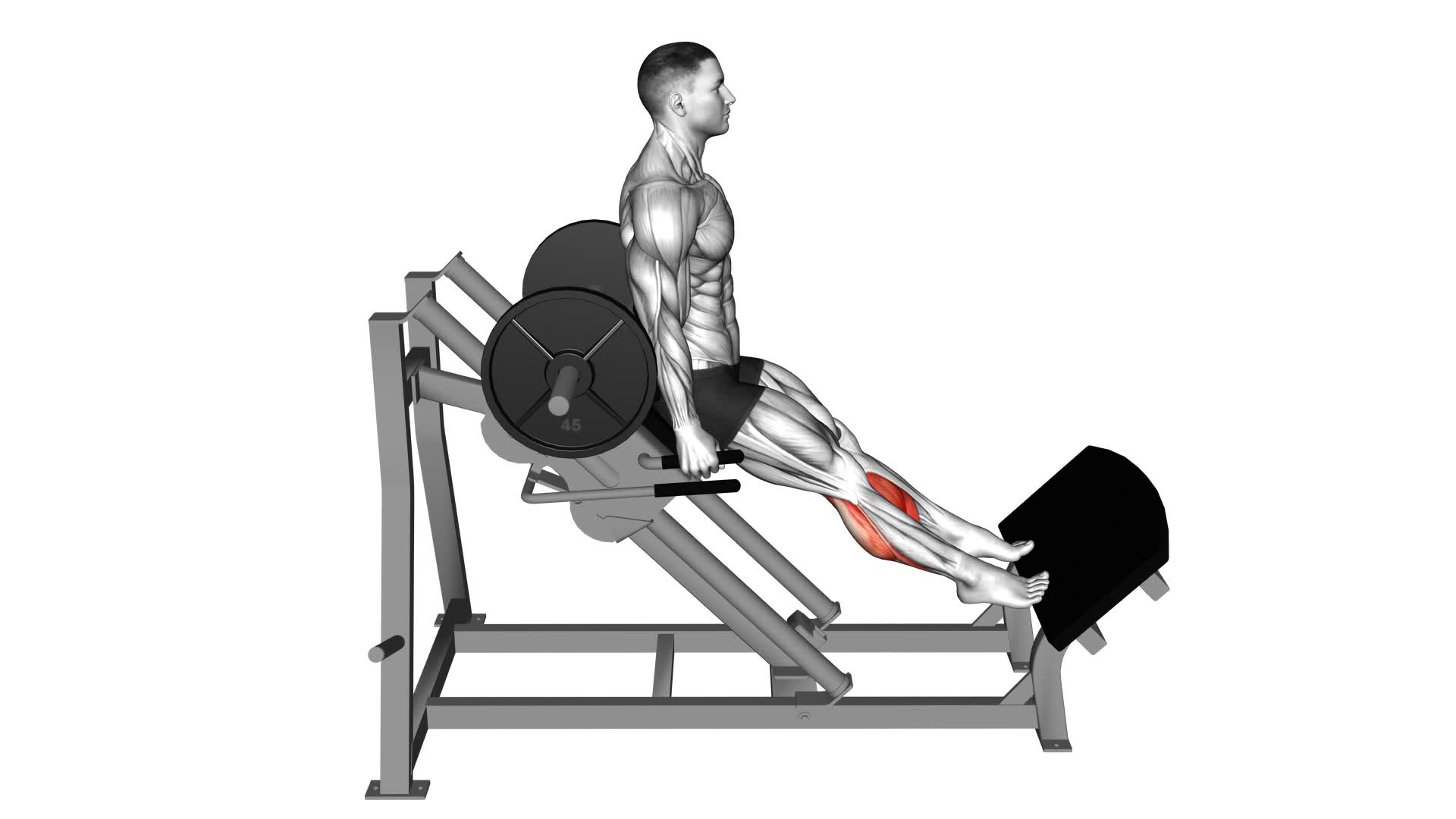
Are you looking for a new exercise to target your calf muscles? Look no further!
Watch This Exercise Video
In this video exercise guide, we will show you how to perform the sled backward angled calf raise. This exercise is great for building strength and definition in your calves.
We'll provide you with tips on proper form, variations to challenge yourself, and how to avoid common mistakes.
Get ready to take your calf workout to the next level!
Key Takeaways
- Targets calf muscles for strength and definition
- Helps with injury prevention and muscle activation
- Improves ankle stability for sports that require quick changes in direction
- Activates gastrocnemius and soleus muscles for walking, running, and jumping movements
Benefits of the Sled Backward Angled Calf Raise
To maximize your calf muscle development, performing the sled backward angled calf raise can provide significant benefits. This exercise not only targets your calf muscles but also helps with injury prevention and muscle activation.
By working your calves in this unique angle, you engage the muscles in a different way, leading to better overall development and strength. The sled backward angled calf raise also helps to improve ankle stability, which can be beneficial for athletes participating in sports that require quick changes in direction.
Additionally, this exercise activates the gastrocnemius and soleus muscles, which are important for walking, running, and jumping movements. By strengthening these muscles, you can improve your overall athletic performance and reduce the risk of calf strains and other lower leg injuries.
To perform the sled backward angled calf raise properly, make sure to maintain a straight posture throughout the movement. Keep your core engaged and push through your toes as you lift the sled.
Proper Form and Technique for the Exercise
To perform the sled backward angled calf raise with proper form and technique, start by positioning yourself on the sled machine.
Follow these steps to ensure you execute the exercise correctly:
- Place your shoulders against the pads and position your feet shoulder-width apart on the platform.
- Grip the handles for stability and maintain a slight bend in your knees.
- Slowly lower your heels towards the ground, feeling a stretch in your calves.
- Push through your toes and raise your heels as high as possible, contracting your calf muscles.
- Hold the contraction for a moment and then lower your heels back down to the starting position.
Proper form is essential to maximize the benefits of the sled backward angled calf raise and avoid common mistakes. Here are some key points to keep in mind:
- Avoid using momentum by maintaining control throughout the movement.
- Don't lock your knees at the top of the exercise to prevent strain on the joint.
- Ensure your feet are parallel to each other and not turned inward or outward.
By following these guidelines, you can incorporate the sled backward angled calf raise into your workout routine effectively.
In the subsequent section, we'll explore variations and modifications to challenge yourself further.
Variations and Modifications to Challenge Yourself
To challenge yourself further, try incorporating variations and modifications into your sled backward angled calf raise routine. These alternative exercises and advanced techniques will help you target different muscles and increase the intensity of your calf workout.
One variation you can try is the single-leg sled backward angled calf raise. Instead of using both legs, focus on one leg at a time. This will require more stability and strength from your calf muscles.
Another modification is to increase the weight on the sled. Gradually add more weight as you become stronger to continue challenging your muscles.
Another option is to perform the exercise on an incline. This will shift the focus to different parts of your calf muscles and provide a new challenge.
You can also try doing the calf raises with your toes pointed inward or outward to target different areas of your calves.
If you're looking for an advanced technique, try incorporating a pause at the top of the movement. Hold the contraction for a few seconds before slowly lowering your heels back down. This will increase the time under tension and make the exercise more challenging.
Tips for Maximizing Results and Avoiding Common Mistakes
Maximize your results and avoid common mistakes by following these tips for the sled backward angled calf raise.
- Maintain proper form: To optimize your results and prevent injury, make sure you maintain proper form throughout the exercise. Keep your back straight, engage your core, and focus on using your calf muscles to lift the weight.
- Start with lighter weight: It's important to start with a weight that you can comfortably handle. Gradually increase the weight as your strength improves to avoid straining your muscles or joints.
- Control the movement: Avoid using momentum or swinging your body during the exercise. Instead, focus on controlled movements and a slow, controlled descent to fully engage your calf muscles.
- Avoid common mistakes: Two common mistakes to avoid are lifting the weight with your back instead of your calves and not fully extending your ankles at the top of the movement. These mistakes can diminish the effectiveness of the exercise and increase the risk of injury.
- Listen to your body: Pay attention to how your body feels during the exercise. If you experience any pain or discomfort, stop and consult a fitness professional.
By incorporating these tips into your sled backward angled calf raise routine, you can optimize your results and minimize the risk of common mistakes.
Now, let's move on to a sample workout routine that incorporates this exercise.
Sample Workout Routine Incorporating the Sled Backward Angled Calf Raise
For an effective workout routine incorporating the sled backward angled calf raise, start by incorporating this exercise into your leg day routine. The sled backward angled calf raise primarily targets the calf muscles, specifically the gastrocnemius and soleus muscles.
In order to maximize the benefits of this exercise, it's important to structure your workout properly. Begin with a warm-up consisting of dynamic stretches and mobility exercises to prepare your muscles for the workout. Then, perform compound exercises such as squats and lunges to engage the larger muscle groups in your legs.
After that, include the sled backward angled calf raise as an isolation exercise to specifically target your calf muscles. Aim for 3-4 sets of 10-12 repetitions, gradually increasing the weight as you progress. Remember to maintain proper form throughout the exercise and focus on contracting your calf muscles.
As with any workout routine, it's important to listen to your body and adjust the intensity and volume according to your fitness level and goals. Make sure to cool down and stretch your muscles after the workout to aid in recovery.
Frequently Asked Questions
How Many Sets and Repetitions Should I Do for the Sled Backward Angled Calf Raise?
For the sled backward angled calf raise, it's important to consider your fitness level and goals.
Start with 2-3 sets of 8-12 repetitions.
If you're a beginner or have any injury modifications, it's best to start with lighter weights and focus on proper form.
For advanced lifters, you can increase the weight and intensity, aiming for 3-4 sets of 12-15 repetitions.
Always listen to your body and adjust as needed.
Can I Do the Sled Backward Angled Calf Raise if I Have Knee or Ankle Injuries?
Yes, you can modify the Sled Backward Angled Calf Raise if you have knee or ankle injuries. It's important to prioritize your safety and avoid aggravating any existing injuries.
Instead, focus on exercises that are less stressful on your joints, such as seated calf raises or calf raises using resistance bands. These alternatives can still target your calf muscles effectively while reducing strain on your knees and ankles.
Always consult with a healthcare professional before starting any new exercise routine.
What Muscles Does the Sled Backward Angled Calf Raise Primarily Target?
The sled backward angled calf raise primarily targets your calf muscles. This exercise is beneficial for strengthening and toning your calves. It also helps improve ankle stability and mobility.
To perform this exercise, make sure to maintain proper form and technique. Keep your body in a straight line and lower your heels as far as possible before lifting them back up.
There are variations of this exercise that can provide additional challenges or target different areas of your calves.
Can I Perform the Sled Backward Angled Calf Raise on Any Type of Sled Machine?
Yes, you can perform the sled backward angled calf raise on different types of sled machines. There are various sled machines available, each with its own design and features.
Performing calf exercises on a sled machine offers several benefits. It allows for controlled resistance and targets the calf muscles effectively. Additionally, using a sled machine can help improve balance, stability, and overall lower body strength.
How Often Should I Incorporate the Sled Backward Angled Calf Raise Into My Workout Routine for Optimal Results?
To achieve optimal results, it's important to incorporate the sled backward angled calf raise into your workout routine with the right frequency.
The frequency of sled calf raises can vary depending on your goals and fitness level. It's generally recommended to perform this exercise 2-3 times per week.
However, it's always a good idea to consult with a fitness professional to determine the best frequency and variations of sled calf raises that are suitable for your specific needs.
Conclusion
Incorporating the sled backward angled calf raise into your workout routine can provide numerous benefits. This exercise is great for strengthening and toning your calf muscles.
By following proper form and technique, you can ensure that you are targeting the right muscles and getting the most out of the exercise.
Challenging yourself with variations and modifications can also help to maximize your results. You can try adjusting the angle of the sled or adding weights to increase the intensity.
However, it is important to listen to your body and avoid pushing yourself too hard. Overexertion can lead to injury, so it is crucial to know your limits and work within them.
Incorporating the sled backward angled calf raise into a sample workout routine can be a great way to achieve a well-rounded lower body workout. This exercise can be paired with other leg exercises like squats and lunges to target different muscle groups and ensure overall lower body strength and development.

Author
Years ago, the spark of my life’s passion ignited in my mind the moment I stepped into the local gym for the first time. The inaugural bead of perspiration, the initial endeavor, the very first surge of endorphins, and a sense of pride that washed over me post-workout marked the beginning of my deep-seated interest in strength sports, fitness, and sports nutrition. This very curiosity blossomed rapidly into a profound fascination, propelling me to earn a Master’s degree in Physical Education from the Academy of Physical Education in Krakow, followed by a Sports Manager diploma from the Jagiellonian University. My journey of growth led me to gain more specialized qualifications, such as being a certified personal trainer with a focus on sports dietetics, a lifeguard, and an instructor for wellness and corrective gymnastics. Theoretical knowledge paired seamlessly with practical experience, reinforcing my belief that the transformation of individuals under my guidance was also a reflection of my personal growth. This belief holds true even today. Each day, I strive to push the boundaries and explore new realms. These realms gently elevate me to greater heights. The unique combination of passion for my field and the continuous quest for growth fuels my drive to break new ground.



